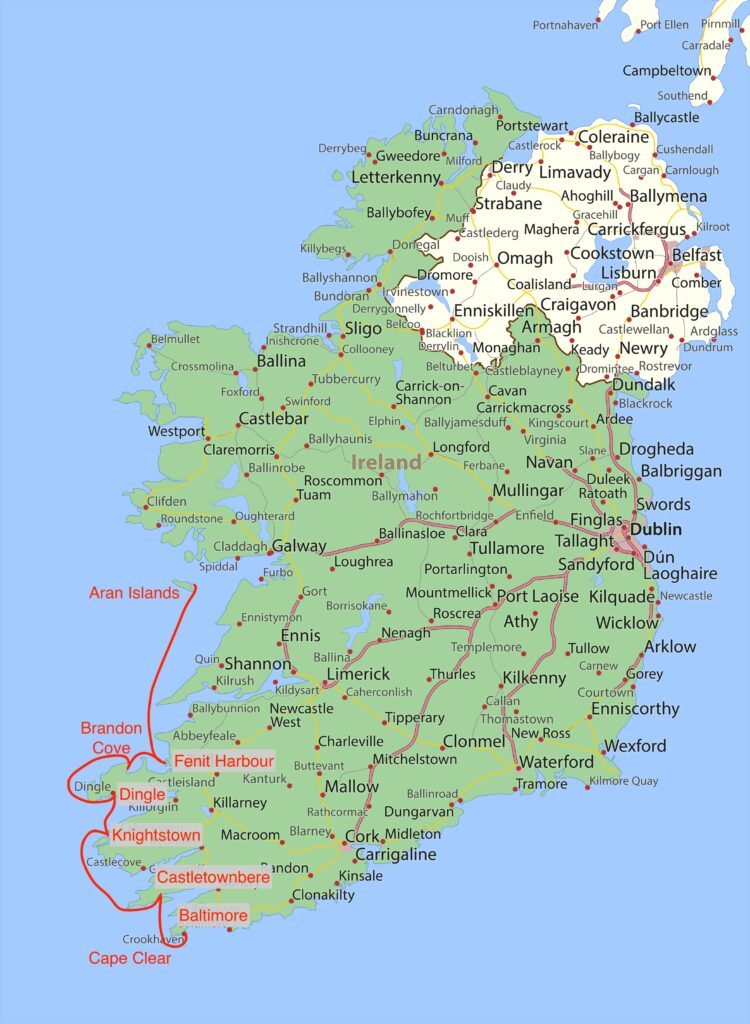We awoke in the harbor of Inishmore on the Aran Islands to post-storm clear skies, a fresh breeze, and a full agenda. Our objective was the small fishing harbor of Fenit (fen-ISH), where, if our planning proved accurate, we could finally fill up with diesel and discontinue our miserly motoring tactics. The day looked promising for the 55 miles to go as we followed another sailboat out of the harbor and turned south between Inishmore and its close neighbor – geographically and phonetically – Irishmaan. Immediately, we were in the thick of it. Large swells, the detritus from yesterday’s storm, were being compressed in the narrow gap between the two islands. We have become quite aware of how angry compressed water can get. With still-limited diesel, we set sail and immediately took a close-hauled course through the gap, losing significant momentum each time Sea Rose’s bow came abruptly head to head with the next wave. White water and sea spray painted the cliffs to leeward on Inishmaan, ready to put us away should we lose our focus. I felt like a dental patient waiting with clinched fists, knowing that the pain will stop eventually yet wondering why it’s taking so long. Gradually the roar of the cliffs subsided and we found ourselves in open water with bigger waves but more elbow room to do our work. On flat water, we would have been able to easily make Fenit harbor on a single close-hauled tack but each wave introduced a little movement sideways instead of 100% forward. The technical wizard inside our chart plotter was following all of this activity closely and rather blithely painted a course-over-ground vector that incorporated the net effect of both movements. This vector, swinging in a 20-30 degree arc, had us not quite clearing the major points of land south of us. I tried hand steering to hold us on the razor’s edge of a heading that produced enough wind in our sails to keep us moving forward without luffing. At times we would be doing a respectable 6 knots through the water but then we’d slow to a painstaking 3-4 knots. With the big waves and choppy water, those 2-3 knots of extra speed make all the difference, with Sea Rose holding a steady course and driving through the chop instead of being at the mercy of the seas.


